There is a word that I loathe more than all others, and it’s ‘nice’. I hate it. And I hate it more when somebody says it about something I have designed. I get paid for my garden design ideas, and it’s a point of pride that they are as good as they can be.
Of the millions of English words in the dictionary, there is no word more boring and overused than ‘nice’. Nice means something like: ‘I don’t know what to say’. Or ‘I’m so bored and I can’t even roll my eyes because it’s rude’. This is ‘Nice’:

I don’t want nice. I want ‘wow’ – so here are my top garden design tips to make any landscape better.
‘Pretty’ is the enemy of ‘Beautiful’
-Nonna Giuliana
Set The Mood – Garden Design Ideas Grow from a Garden Style
When I want to go out for dinner with my partner, we ask each other: ‘What do you feel like?’
I am sure you do this, too.
Sometimes it’s ‘Italian!’ (groundbreaking, I know…), sometimes ‘Vietnamese’…and so on.
How amazing it is that just one word has the power to create a whole world of flavors and atmospheres. ‘Italian’ conjures the scent of basil and pasta al pomodoro or a crunchy pizza from a wood-fired oven. Vietnamese is the wonderful combination of star anise, ginger, cinnamon, and lime that make a delicious pho.
Here is another example:

I’m sure that you only need to look at that bob haircut, the sunglasses, and those chunky necklaces to recognize Anna Wintour.
The point? It’s possible to describe a mood (or a person, a look, a style) with only a few defining characteristics.
What characteristics will you use to define your garden style?
It should be the same for your garden. A glimpse should immediately tell the world what it is about. What ‘language’ are you speaking, and what mood are you evoking?
I’m amazed how often gardens look confused, or worse – completely different from what they meant. Look, for example, at this picture:
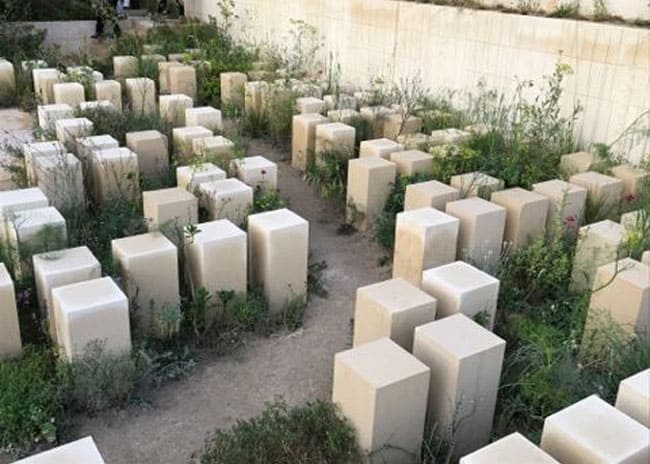
This garden, designed by James Basson, won the Gold Medal and Best Show Garden at the Chelsea Flower Show. It was quite controversial: some liked it, and some didn’t.
Fair enough.
For me, it was terrible to read the Facebook comments – somebody called it a ‘pet cemetery’…
And the truth is, it does look like a pet cemetery. Stone blocks emerging from a scruffy lawn are defining elements for what a pet cemetery looks like in most anybody’s imagination. Sorry James.😬
So, we have a few things to solve:
How to create a mood and choose the garden elements to express it?
How do we prevent our garden from reminding anyone of a pet cemetery?
To create a mood, we have to find the main features that define it. What are the main garden design ideas for the project? How many do we need?
Apply the Pareto principle to your backyard garden design ideas
The Pareto Principle, also called the 80/20 rule, says that 20% of the input creates 80% of the result.
(Heavenly choir)
We just have to find the 2 or 3 things that express clearly what we are talking about (the 20%) like the bob haircut, the sunglasses, and the necklaces in the Anna Wintour example.
The best way to figure out these qualities is to examine pictures that show that mood and figure out what they have in common.
Let’s say, for example, that you want to design a country garden. If you google ‘country garden’ and then click on ‘Images’. This is what you might see:
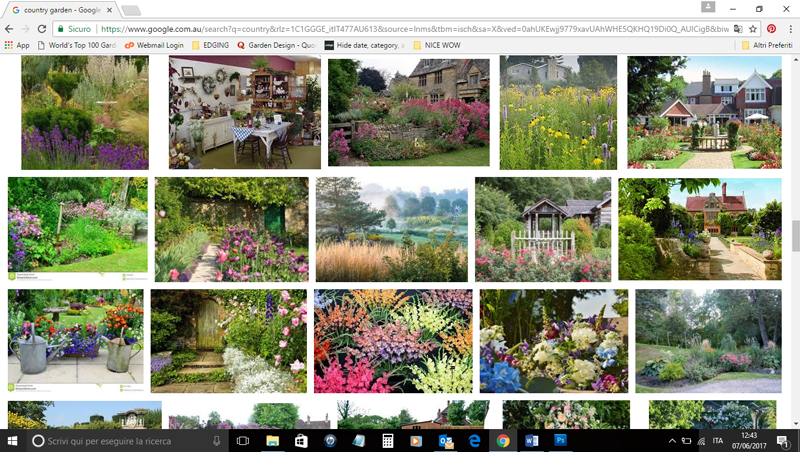
What do these garden pics have in common?
- Informal atmosphere
- Masses of plants
- Hard surfaces are uneven and limited in size
Look at this beautiful garden in Umbria, Italy, by Niccolo’ Grassi, an Italian Landscape and Garden Designer:
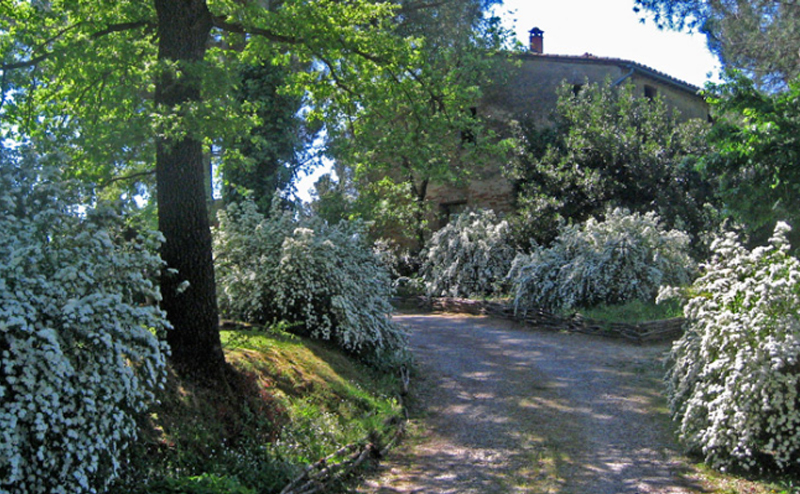
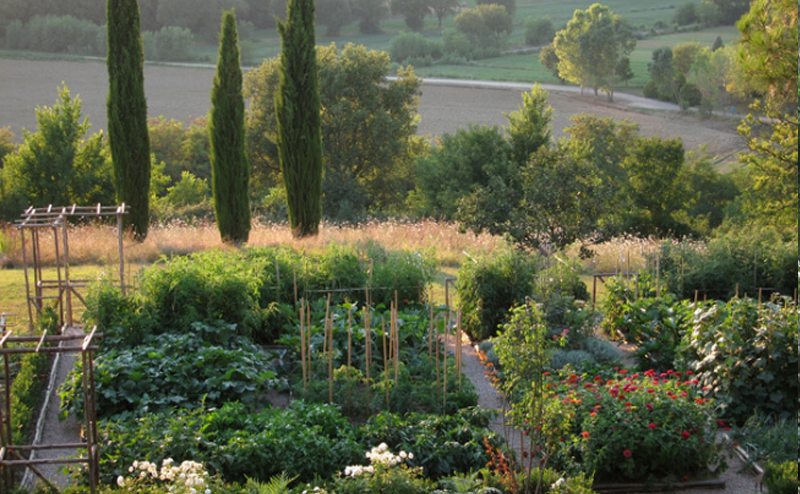
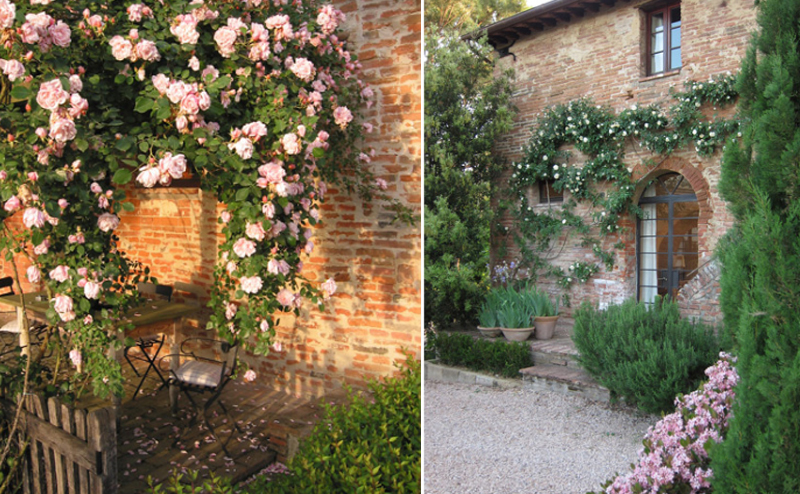
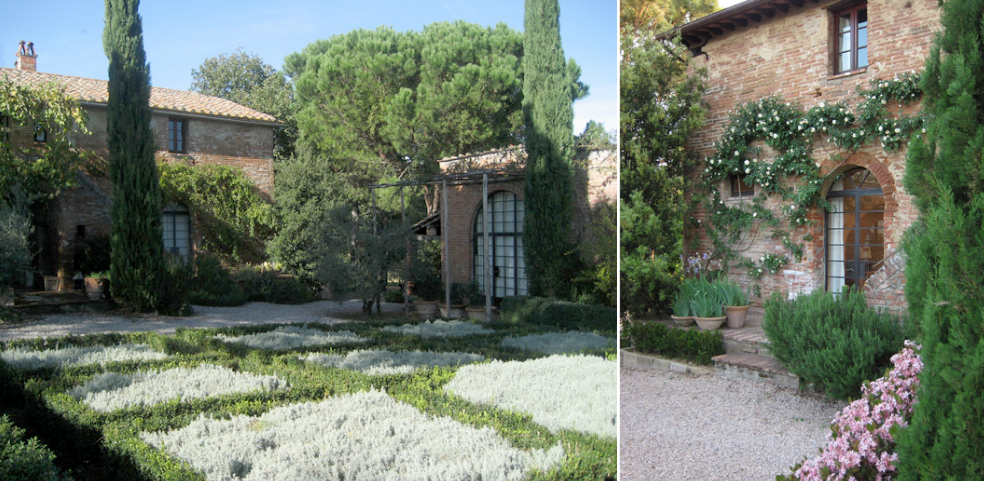
What do you notice?
An informal atmosphere? Masses of plants? Uneven and limited hard surfaces?
The perfect country garden served!
Now we have to solve the problem of choosing the right references so that our garden doesn’t look wrong. If someone as talented as James Basson, who has many years of experience, can make this mistake, the solution to this problem is not easy.
I only see two possibilities:
- Increase your knowledge: the more you know, the less likely you will be to pick up the wrong references. (also, you can access my free garden style guides here – each one gives you the defining elements of the style)
- Once you define your mood, discuss it with somebody you trust. Often, we fall in love with our own ideas, and we lose objectivity. Listening to other peoples’ impressions helps us to understand if the message we are sending out there is heard loud and clear.
How to Perfect Your Garden’s Proportions
Proportion and scale are the most important aspects of design. If they are not correct, whatever you design will look unbalanced, unfinished, and uncomfortable.
In a well-proportioned composition, all the parts have the right dimension and scale compared to the others. If the proportions are well conceived, walking through a room, sitting on a chair, or chilling in a garden is comfortable and harmonious. It’s like wearing a bespoke suit: it fits perfectly.
Getting the right proportions is not a superpower; it’s more a matter of practice. Once you learn how to put things in the right correlation, it becomes more and more natural.
How come?
Use the Golden Ratio in your landscape design
Have you ever heard about the Golden Ratio?
It’s a special number found by dividing a line into two parts. The longer part, divided by the smaller part, is also equal to the whole length divided by the longer part:
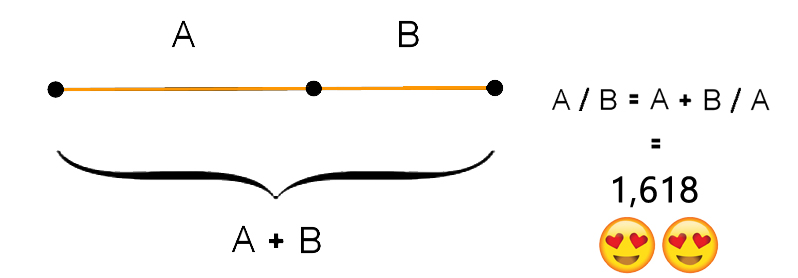
This number, approximately 1.618, has been known since Euclid. It has been used to design many masterpieces, from the Parthenon to Leonardo da Vinci’s Mona Lisa and the Taj Mahal to Mies van der Rohe houses. Scientific tests have shown how our brains are particularly attracted to this proportion. It is considered the most satisfying.
How to use this magic number?
Let’s say that you want to design the perfect rectangle that has a 1-meter side – the other side should be 1.6 meters. This kind of geometric shape where side lengths are in the golden ratio is called a golden rectangle.
You can apply this rule to every element of your project. The height of a pergola compared to its length, the width of a pathway compared to the width of the lawn next to it, etc.
I used the golden rectangle in this garden to define all the prominent lines of the project:
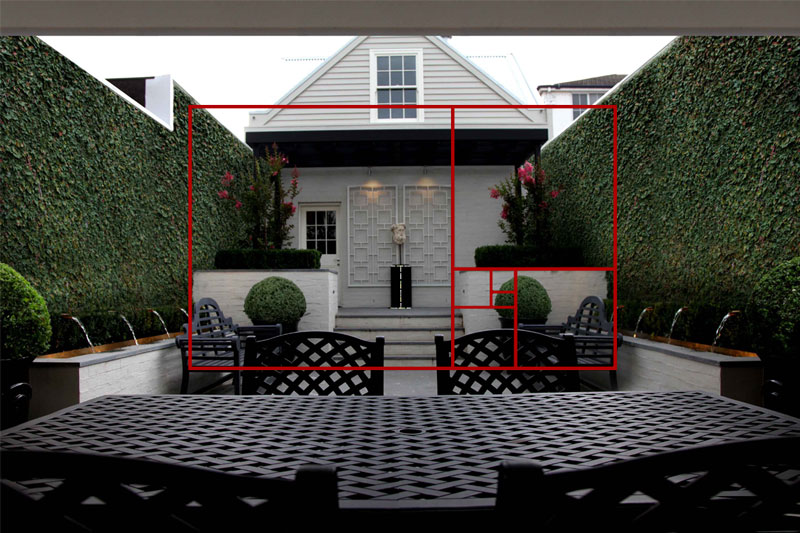
If you are in doubt about the proportion and the scale of your design, check if they are close to the Golden Ratio.
Quantity Matters – Your garden probably doesn’t have enough plants
The most common frustration among garden makers is a disconnect between the vision and the reality. After looking at magazines for inspiration, your own creations seemed far away from what you were trying to build. And it feels hopeless.
But if you take another look at the pictures and your results, the problem is often blatantly obvious. The picture is lush and luxuriant – the plants are all of good size. Accounting for size and giving the garden time to grow together is certainly part of the issue. But I’d venture a guess that the bigger problem is that you just don’t have enough plants.
If you want a garden full of plants, the only thing that you can’t avoid using is…PLANTS!
Maurizio Usai is a Landscape Architect based in Sardinia, and he knows this rule well. A profusion of well-combined plants is his signature. If you look at these pictures, I am sure that you agree with me when I say that every inch of the garden is filled with plants.
When I am planting a garden, I drastically “overplant” (if we are to go by the spacing recommendations on the plant tags). I mostly try to choose plants as small as I can (smaller plants cost less), and I make up for it by planting much more. Plant densely, and your garden will be healthier, more lush, and more like the pictures you see in magazines.
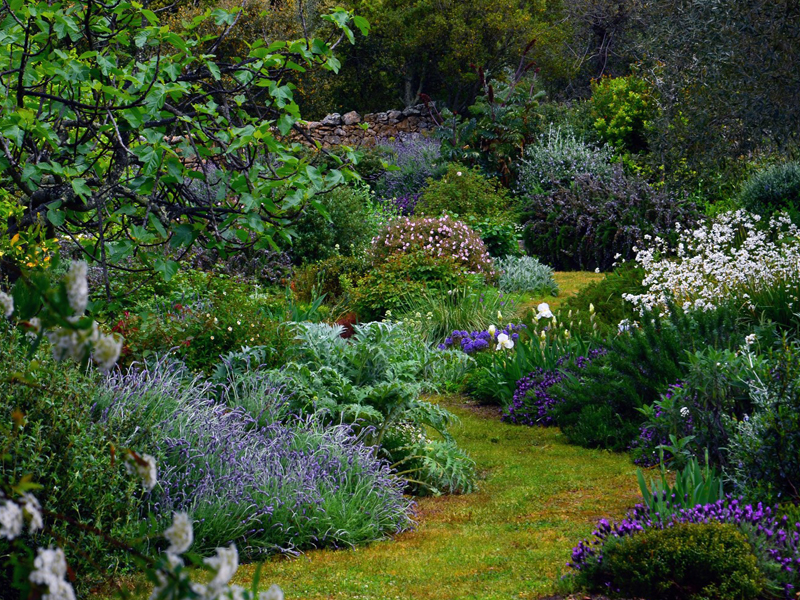
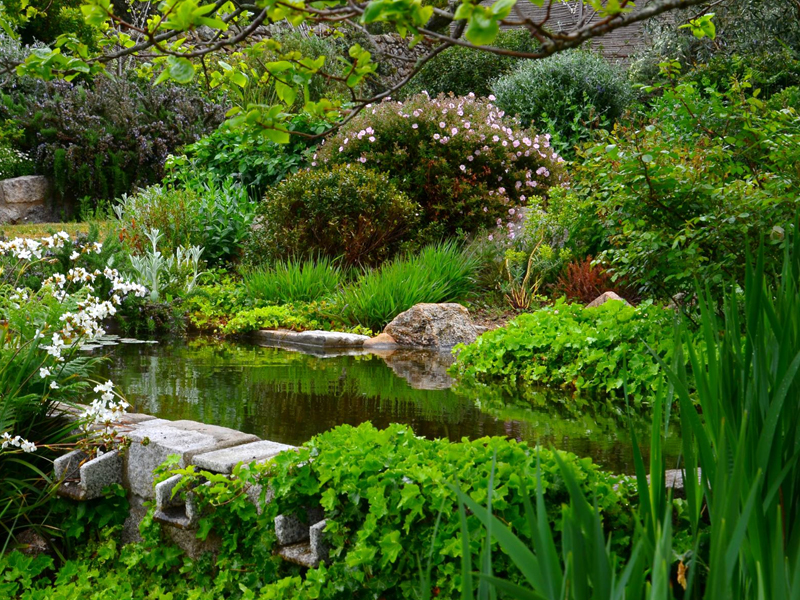
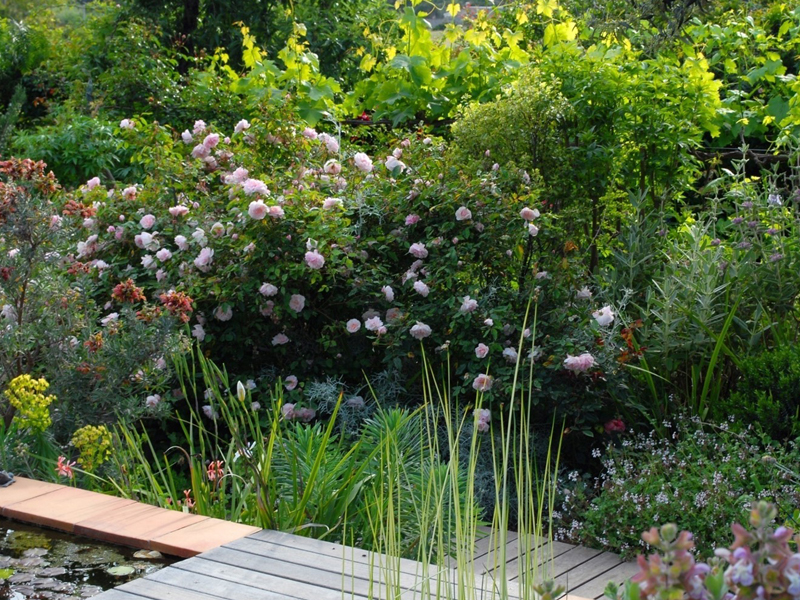
Give Me Details! The special touches in Garden design are important
We all are similar because we have a pair of eyes, ears, legs, one nose, etc.
But what really makes us different from each other is that bunch of unique details: a big nose or a sweet voice, or that soft and young skin that I wish I had. Lol.
It’s the same for gardens: the more they are rich in details, the more their character and personality are defined.
“God is in details”
-Mies van der Rohe
Mies was right: details take every design to another level; details step it up.
Flowers, leaves, textured foliage, and unusual finishes will help your design to become more interesting. The more you pay attention to getting the details of your garden design right, the more your design will carry value and have a timeless appeal.
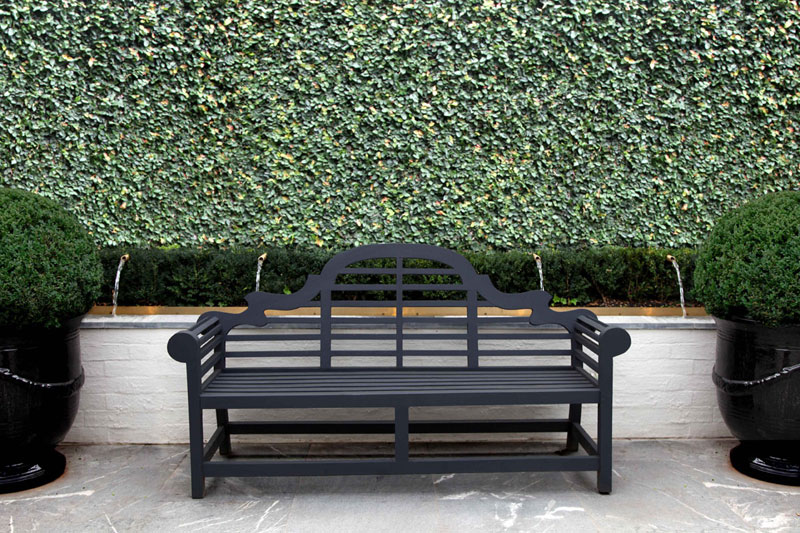
In this project, for example, I had to deal with a small space. To avoid a sense of confusion, I used a limited material palette, and I chose plants with tiny and extremely textured foliage. You can see in the image above because of the light play; it’s like having a million pixels of different shades of green.
You can’t overdo thoughtful design – the more details, the richer the garden.
Have a look at this other project. Here I designed paving using small black and white pebbles, and I used graphic plants:
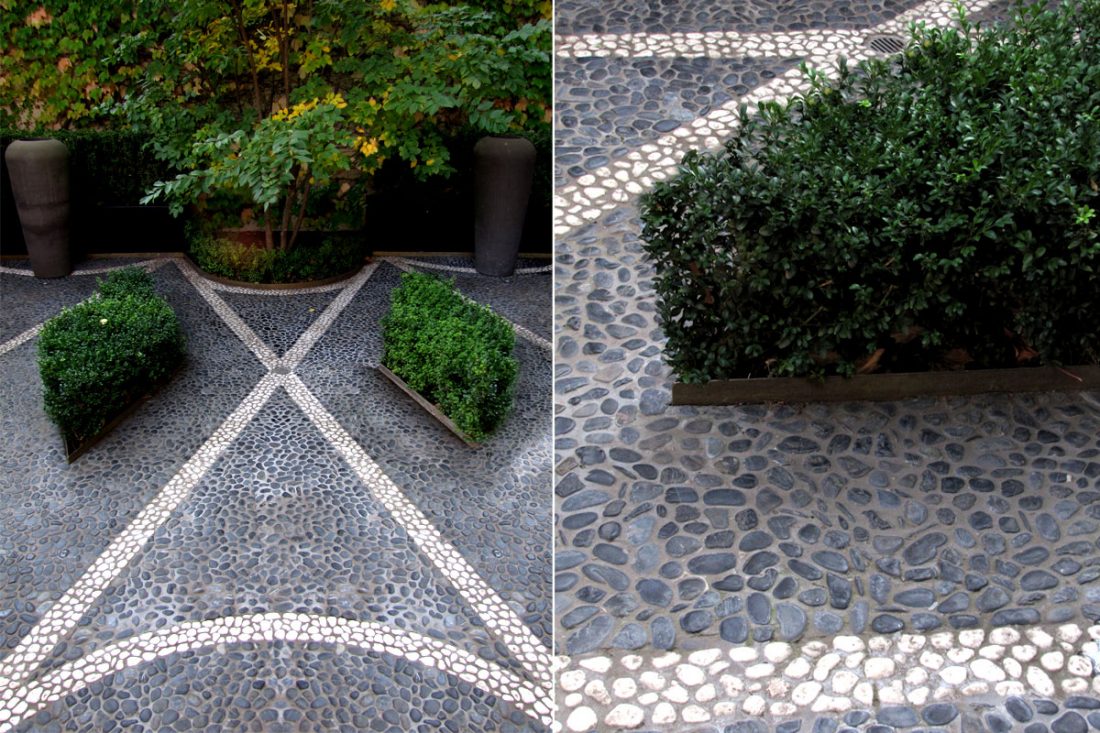
The contrast between the large foliage and the textured mosaic perfectly suits this project!
If you look at both pictures, you notice how your eyes can’t stop jumping around from one detail to the next, like bees in a meadow.
This is what the details are for. A plain and simple composition gets boring quickly because there’s not so much to see. On the other details, keep interest high.
Get Out Of Your Comfort Zone – Garden Design Should Be Fun
Always remember: the only reason why you should master the rules of garden design – is to break them all. When you get out of your comfort zone, the magic happens. Don’t be afraid to try new things, make mistakes, and try something else. It’s the only way to be innovative and able to create something new!
TL;DR – How to make a nice garden?
- Know your style – and lean into the main elements that convey that style. Make a statement.
- When in doubt about sizes – use the Golden Ratio to make proportions better
- When working with plants – less is less and more is better. Leave no patch uncovered – don’t rely on mulch to fill in space.
- Details matter – the simple easily becomes the sublime when you focus on making the details shine.
Ciao!!!
– Carlo Gabriele for PITH+VIGOR
About Pith and Vigor: Pith and Vigor refers to a lively and vigorous spirit or energy. It is often used to describe someone filled with enthusiasm and vitality. This phrase signifies a strong and robust attitude towards life, embodying a sense of determination and grit.
Images: The M&G Garden designed by James Basson, photo: Alessandro Martinelli, courtesy of Carlo Gabriele, I Fontanili garden, design by Maurizio Usai. Photo: Maurizio Usai
Related Garden Design Basics Posts:
Share this post:
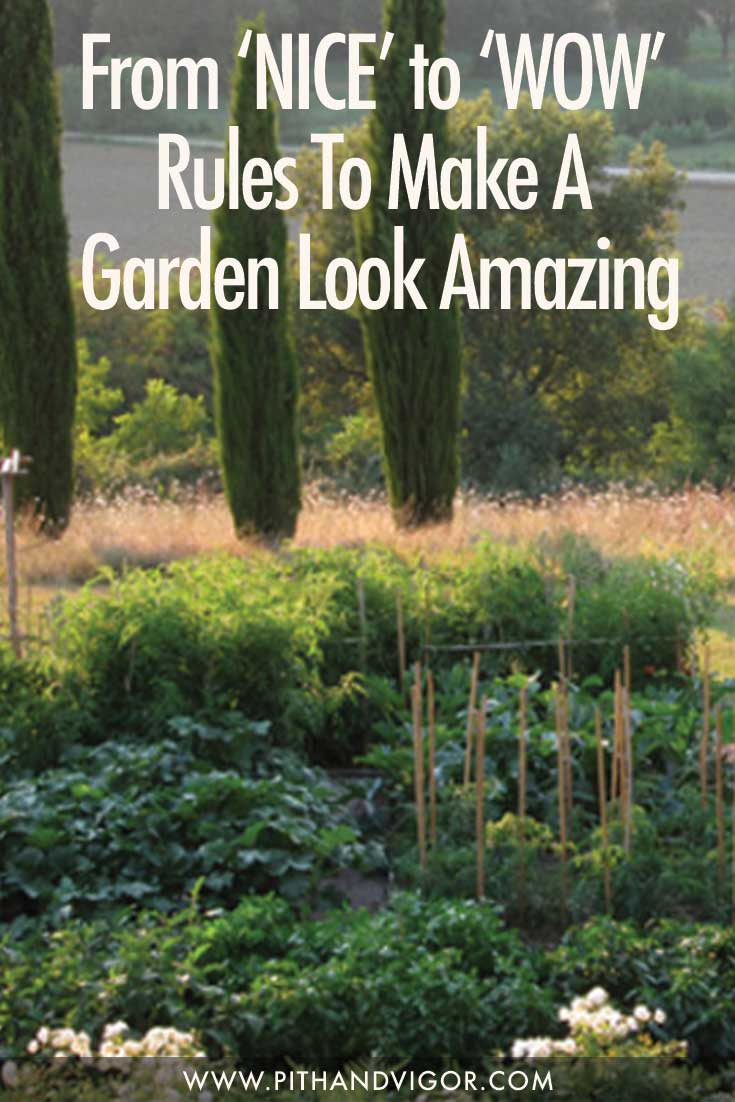
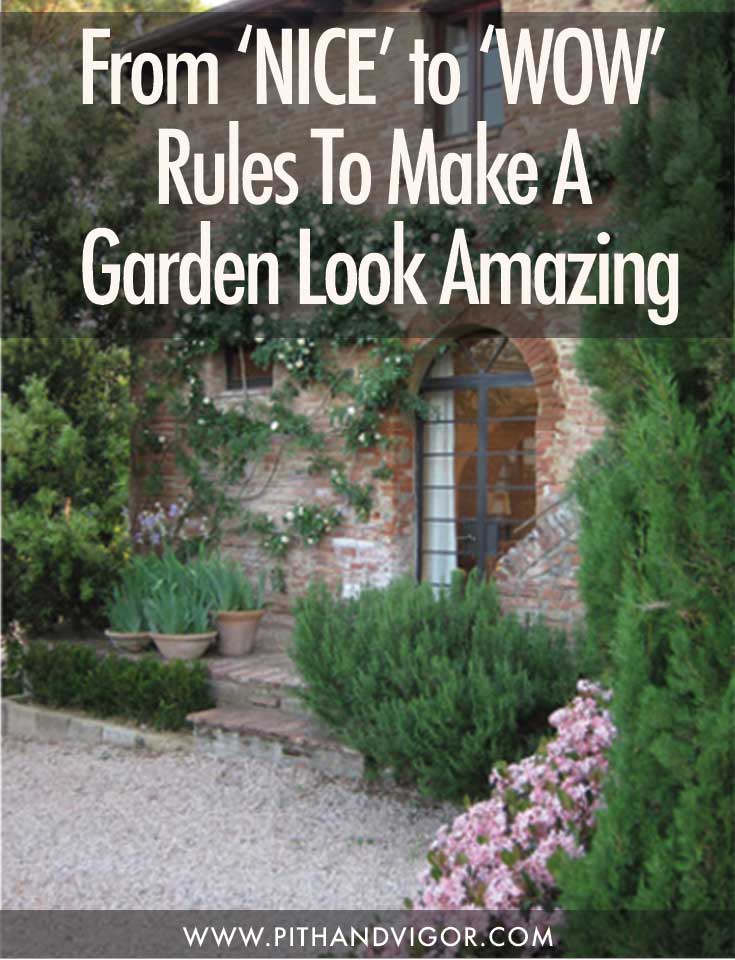
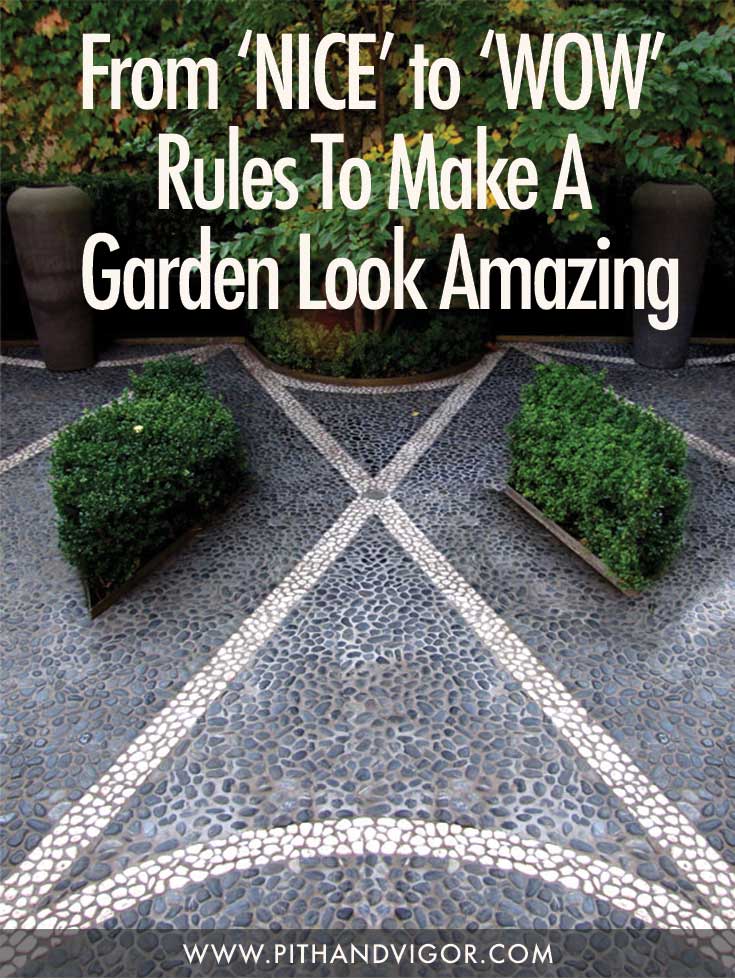
great post!
Thanks Katherine!
Love love love. Thank you!
“How to avoid our garden reminding anyone of a pet cemetery?” a good question, I will ask myself before each my new garden design 🙂
Great post. I love this article. Thanks for sharing.
Great article! And great job with a pebbles. 🙂 Thanks for pointing out how important is attention to details.
This post is very helpful indeed. Check out this landscaping resource that was also helpful for me: rebrand.ly/7250l86f6
For 25 years I have be dreaming of making over my back yard in the city starting with what I want it to look like in the winter. I haven’t gotten to it yet but I have accumulated bits & pieces to help me when I retire next year. Your information has been beyond helpful. Thank you for sharing so that novices like me can learn and do things right from the start–myself. You are a gift to all of us. ~ Andrea